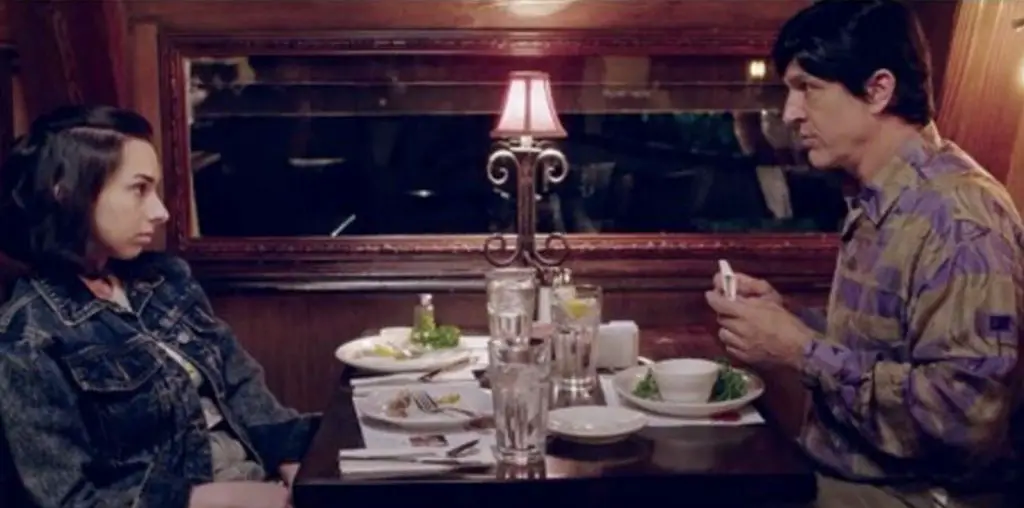
The last couple days of the Cannes Film Festival haven’t seen any competition films that stand up to the best works of those screened on Tuesday and prior. The overall competition remains strong, but unless the two remaining films are impressive the finish won’t be a memorable one.
One uneven offering is “Free Zone” by Israeli director Amos Gitaï, who explores the Israeli-Palestinian conflict through three females—two older women from each of the feuding cultures (Hanna Laslo and Hiam Abbass) and a young American played by Natalie Portman. A brilliant closing shot of an argument whose logic sums up the entire Israeli-Palestinean conflict demonstrates how much more tight and to the point the rest of it could have been. While many films made in the region side one way or the other, Gitaï does not. He has plenty of intelligent observations to make, but often loses sight of them in favor of rambling sequences that don’t always work.
Gitaï’s film consists largely of long takes as Portman and Laslo pass through control points, get into arguments and try to settle Moshne’s business in the free zone around Iraq, Syria and Jordan, where Hanna’s husband has a deal that he can’t complete because he was injured in a bombing. There are also some interesting, if not always successful, sequences in which Gitaï superimposes a series of images from a character’s past and present—and at one point a freeze frame—to show the layers of memory.
Arnaud and Jean-Marie Larrieu didn’t prove themselves worthy of the competition with “Peindre ou faire l’amour” (“To Paint or Make Love”). The film is one of those frothy and nice European countryside films that seems designed for older U.S. audiences who want to see a pretty foreign film and not worry about having to think.
Daniel Auteuil and Sabine Azema star as a retired meteorologist and his wife, an amateur painter who operates a small business. The wife, painting a picturesque country sunset, meets a charming blind man (Sergi Lopez) who is the mayor of the village. He tells her about house that’s for sale, she tells her husband and the next thing you know they’re moving in. The film looks lovely and the performances are pleasant, but I’m at a loss to say what this film is about. As the couple decides to have a double affair with their neighbors, it has no strong affect on their lives other than making them worry about when they’ll get to have more sex, and I guess the final conclusion is that swinging is fun for everyone.
After writing the above, I was referred to A.O. Scott’s blog at the New York Times, where he decided that the only way to proper communicate the level of ridiculousness that the plot reaches was to describe it in its entirety. I too feel that my description is inadequate, but since the said summary is available elsewhere, will not waste anymore time discussing this film.
Another film I’m not inclined to write much about is Hong Sangsoo’s “Tale of Cinema.” I will say that the Korean film features insufferable characters, several pointless zoom-in shots and a film within a film that isn’t at all stylistically different from the rest of the movie. This title was a last-minute addition, and should have stayed out of what is supposed to be an exclusive category.
The film that has sparked the most debate has been the Mexican entry “Battle in Heaven,” which premiered Tuesday. Some find director Carlos Reygadas’s effort creative and daring. And it is, but to create shock and discussion more than to make an effective film.
The opening shot starts on an aged, overweight man’s stone face. The camera moves down to reveal a young woman with dreadlocks fellating him. It then cuts to the actual world, during a flag raising and the man turns out to be a chauffeur for a general. The significance of the opening shot sort of becomes clear, but Reygadas’s overall intent does not.
“Battle in Heaven” is full of brilliant camerawork and sound design, including a moment when the camera leaves a room through the window, travels around the city and listens to its many voices and sounds. But the point of it all fails to come across amidst the discussion of a baby who died after the main character and his wife kidnapped him. The other puzzling storyline involves the woman seen in the opening shot, the boss’s daughter who works as a prostitute as a hobby (as far as I can tell) and with whom our hero is infatuated. While a second viewing out of the festival haze might reveal more, “Battle in Heaven” seems to be little besides a stylistic exercise without a sense of theme or emotion. I admire the risks Reygadas took making the film, but they didn’t all pay off.
Film Threat’s 2005 Cannes Film Festival coverage continues throughout the week!
Check out Jeremy’s previous entry>>>
Visit the Cannes Film Festival website.
